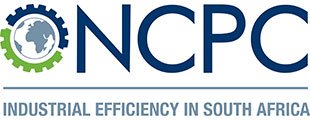Milisha Pillay argues that there has never been a more opportune time for financial institutions to become more invested in structuring financial packages that are designed to appreciate the nuances of energy efficiency projects
Fortified by steeply rising electricity prices, stricter environmental regulations and energy insecurity, the decision of businesses in South Africa to become more energy efficient has become somewhat of a revolutionary one. The National Cleaner Production Centre South Africa’s (NCPC-SA’s) Industrial Energy Efficiency Project has seen a perceptible sharpening of focus among companies with regard to the implementation of energy efficiency. The trajectory for the scale-up of energy efficiency financing in South Africa has not moved with quite the same momentum and this remains a significant opportunity for the financial sector.
Despite more and more South African companies converting to a sustainable mindset, a lack of project finance still consistently ranks as one of the key reasons that small-to-medium-sized enterprises do not implement energy efficiency projects.
The peculiarity of the payback mechanisms for energy efficiency needs to be well understood so that packages can be developed by financial institutions. The focal point is not always a tangible piece of equipment that produces determinate results. Cost savings can be achieved through a wide array of interventions – ranging from power meters to process control changes – and these may not fit the banks’ criteria for what is deemed to be “bankable”.
Commercial banks in South Africa mostly offer direct loans, as they do not have structured packages that take into account the inherent nature of energy efficiency – ‘energy savings’ cannot be directly measured and actually infer the ‘absence of energy use’, and this introduces a new level of complexity to financial institutions.
The lack of available financing for energy efficiency was recently revealed in a study undertaken by the NCPC-SA, where only one of a group of 15 financiers (commercial, developmental and governmental) interviewed had among their offerings a specialised package for energy efficiency. All other respondents indicated that companies that funded energy efficiency projects usually borrowed money off their balance sheet.
The three main costs associated with energy efficiency projects can be categorised into upfront costs (which include activities such as initial assessment and post-project savings measurement), capital costs and operational costs.
Enterprises in South Africa are fortunate to have access to other sources of finance, such as international development agencies, governmental, energy services companies and energy efficiency original-equipment suppliers. Finance options may be sector-specific (especially in the case of government grants) and have important minimum qualifying criteria, such as broad-based black economic- empowerment rating, company size and project size.
Several guides on the different financing options in South Africa have been made available in recent years by the National Business Initiative and the NCPC-SA. Here are some of the general guidelines and considerations for the implementation and financing of energy efficiency projects:
• Start with understanding the need for energy efficiency in the business: Is it a cost imperative or is it to build and strengthen the brand?
• Build a strong business case for energy efficiency and obtain buy-in from senior decision-makers in the company.
• Conduct an investment-grade assessment (IGA) using in-house resources or an independent consultant. The IGA report will detail all assumptions made, calculations of estimated savings and projected costs and, most importantly, the baseline development and M&V methodology to be followed in calculating the actual savings (including the establishment of an accurate energy performance indicator).
• Conduct a cost-risk-benefit analysis to allow potential risks to be identified so that mitigation measures can be put in place.
• Use a set of metrics for evaluating the financial feasibility of the project. These can include net present value, internal rate of return and life-cycle costing (which considers the full cost of owning, operating and maintaining a piece of equipment over its lifetime).
• Assess the finance options that are appropriate for the energy efficiency project and the company.
• Evaluate any additional fiscal opportunities to exploit other savings benefits, such as carbon credits and tax incentives.
• Make provision for the cost of an independent accredited auditor or specialist where required, especially for carbon offsets and tax incentives.
• Consider that the timeline for grants and incentives can be lengthy – the 12L tax incentive requires a baseline assessment (using 12 months’ pre-implementation data) and a performance assessment (using 12 months’ post-implementation data).
• Ensure that a structure is put in place to maintain the energy savings – the economic returns on an implemented project are proven to lose half their economic benefits every six months, if not maintained. The implementation of an ISO 50001-aligned energy management system, for example, would integrate energy efficiency into every functional level of the business to ensure long-term effectiveness and sustainability.
In the wake of the economic destruction associated with the Covid-19 pandemic, almost all South African companies will find themselves grappling with high operating costs. There has never been a more opportune time for financial institutions to become more invested in structuring financial packages that are designed to appreciate the nuances of energy efficiency projects. Commercial banks, other financial institutions and investors therefore have a critical role to play in stimulating the economy as South Africa continues on its low-carbon journey in a new world order.






